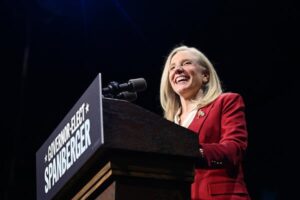
Fixed Tuition
A few days ago, someone mentioned how nice it would be if students could have their tuition level held steady after enrollment, so they could plan. It got me thinking.
The usual version of that proposal assumes that students enroll full-time at a given tuition level, then sail through, full-time, unimpeded, until their on-time graduation. The benefit to the students (and their families) is obvious, both in terms of absolute amounts of money and in terms of predictability. As a parent who has been paying out-of-state tuition since 2019, I get the appeal.
Of course, the rest of the economy doesn’t freeze costs for years at a time, and college employees live in that economy. So annual tuition increases would still have to happen, but they could only be inflicted upon new students. In any given year, freshmen would pay more than sophomores, who would pay more than juniors and so on. The first year that happened, the increase for freshmen would have to be pretty dramatic to ensure that future years would generate enough revenue. Or, theoretically, states could make up the difference.
That doesn’t seem likely.
For example, Pennsylvania hasn’t even passed its budget yet for this year. You know, the one that we’re several months into. Uncertainty rolls downhill; asking us to guarantee years in advance when we don’t even have this year’s figure yet isn’t realistic. In its defense, the state is dealing with a federal funding situation that could be described as mercurial. Higher ed funding at the state level competes with other priorities, such as the state versions of Medicaid.
Now, if the promise of fixed tuition led to a more rational federal budgeting process …
OK, OK. Seriously, though, using variable revenues to cover fixed costs is a dangerous game. Very elite private schools often have the option of using endowment returns to provide predictable operating funds, which, in turn, could lead to more predictable tuition charges. But those of us at the mercy of annual (and frequently late) state allocations don’t have that option.
Even allowing for all of that, though, I can’t help but wonder about the student that the model assumes. It’s essentially the IPEDS model: first-time, full-time, degree-seeking, supported by family. In the community college world, that describes a small minority of the student body.
Here, students move into and out of full-time status from semester to semester. Sometimes life happens and they step out for a bit (or longer), then decide to return years later. They usually work for pay, often full-time, while they’re taking classes. Stop-start patterns of enrollment make predictable tuition harder to define. They also necessarily lead to higher increases for those who come back, since the entire increase for any given year is visited upon new students, rather than being spread evenly across classes.
Free community college would have solved this, of course, by setting a figure of zero and leaving it there. As long as operating support increased with costs, that would be sustainable, and it’s admirably simple. But that doesn’t appear to be on the table at the federal level, and states can’t deficit spend during recessions, which is usually when demand for other services increases and tax revenues drop.
If we could set public funding in a way that covers fixed costs, leaving only the variable costs to be covered by tuition, then there could be a real possibility for a (clearly defined) tuition freeze. Or at least the levels would be low enough that annual increases wouldn’t hurt so much. Until that happens, though, it’s just untenable. As a parent, that bothers me, but the blame should be placed where it actually belongs.
Source link


